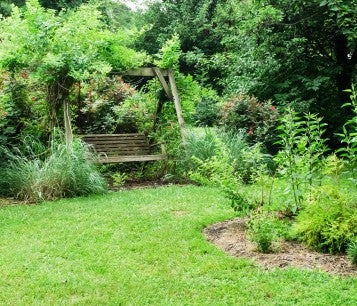Sometimes my most significant revelations are the annoying, kick-me-in-the-pants ones that follow a period of contented denial. One of those seismic shifts in thought came last year at a dinner party, when a man nearly half my age honed in on a flaw in logic I’d subconsciously buried.
A plant science major starting a career in sustainable agriculture, he initially seemed an ally in the natural landscaping movement. But upon hearing of my wildlife-friendly garden, he was skeptical, dismissively suggesting my little plot of land was merely a “conservatory.”
In his early 20s, he was already defeated about the state of the world, and I quietly bristled at his sense of hopelessness. But after some reflection, I had to concede he had a point. I could have the most wildlife-friendly two acres on the planet, but if my neighbors continue to mow and poison and fertilize everything in sight, what have I really accomplished for animals?
Since then, readers and audiences have posed questions indicating a similar desire to affect the larger culture, asking, “How can I get my homeowners association to let us plant native plants?” and “What can I do to persuade my neighbor to stop mowing and spraying pesticides?”
The frequency of the inquiries surprised me at first, given the growing abandonment of outdated “weed laws” that used to leave little room for anything but turfgrass. In recent years, municipalities across the U.S. have embraced conservation landscaping and begun rewarding residents for implementing it. Consumer Reports devoted space in its May issue to encouraging it. Even the White House is on board.
“The battle is no longer really with government entities,” says Bret Rappaport, a lawyer who pioneered the legal fight for natural landscaping in Chicago decades ago. “They all get it.”
But in communities overseen by homeowners associations—where 20% of all U.S. homeowners live—progress can be slower. While some HOAs support and even codify gardening for wildlife, many are still attached to the anachronistic symbol of suburbia: lush lawns that, combined with commercial uses of turfgrass, collectively suck up more water than any other irrigated crop in the country.
In my own Maryland stomping grounds, some HOAs “have the perception that a turfgrass lawn is the only type of beautiful yard,” says Rachel Beebe, stormwater aide for the Howard County Office of Environmental Sustainability, which offers incentives for replacing grass and impervious surfaces. “So they’re not very happy with native plants in landscaping or with rain gardens. And then I’ve also heard of HOAs that regulate rain barrels very, very strictly—you can only have one rain barrel, and it needs to match the color of your house, and it needs to be in your backyard.”
A humane backyard is a natural habitat offering wildlife plenty of food, water and cover, plus a safe place to live free from pesticides, chemicals, free-roaming pets, inhumane practices and other threats. And it's so easy to build!

Want more content like this?
This was written and produced by the team behind All Animals, our award-winning magazine. Each issue is packed with inspiring stories about how we are changing the world for animals together.
Learn MoreSubscribe



